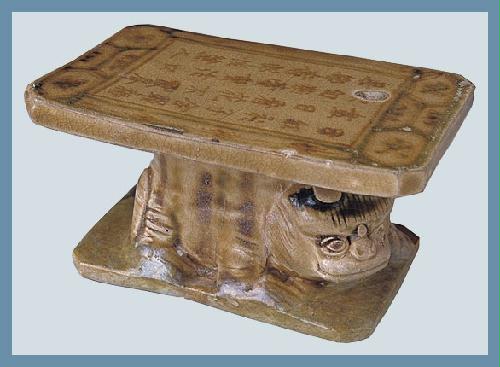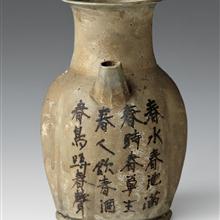Dimensions: Height: 7.3cm Length: 13cm Width: 8.1cm
It is a kind of pillow used to keep cool in summer, which is a fine work of art from the Changsha Kiln because of its unique form and poem design. The pillow takes a crouching lion as its pedestal. On the two ends of the pillow are streaking tortoises and a poem is written in the middle.
Legend has it that there was a man named Xiao’Shi (called XiaoLang later) during the Spring and Autumn period. He was dept at playing the Xiao( a kind of musical instrument) and making it sound like a phoenix singing in harmony. The king of the Qin kingdom married his daughter Nongyu, who loved music, to him and built a Phoenix pavilion. Then, Xiao’ Shi taught Nong’Yu how to play Xiao until real phoenixes were attracted and flew by. By riding on phoenixes into the sky, both of them lived a merry life in paradise. After the Tang Dynasty, XiaoLang became a symbol for an ideal lover in the female mind.
Porcelain pillows appeared in the Central Plains of China during the Tang Dynasty. They became common after the Song Dynasty and the shape became larger. This type of pillows widely used because they were the ideal bed clothing to stay to cool in the summer. The decoration of the porcelain pillow is also different. Pillows from the Changsha Kiln were commonly used by young ladies, two of which used poems to express women’s love for their “Xiaolang”. Some were decorated with an embroidered ball (called Xiuqiu) or a pair of birds flying side by side to imply love. The lion was an animal that defended against and banished evil, so this pillow uses a crouching lion as its pedestal.





